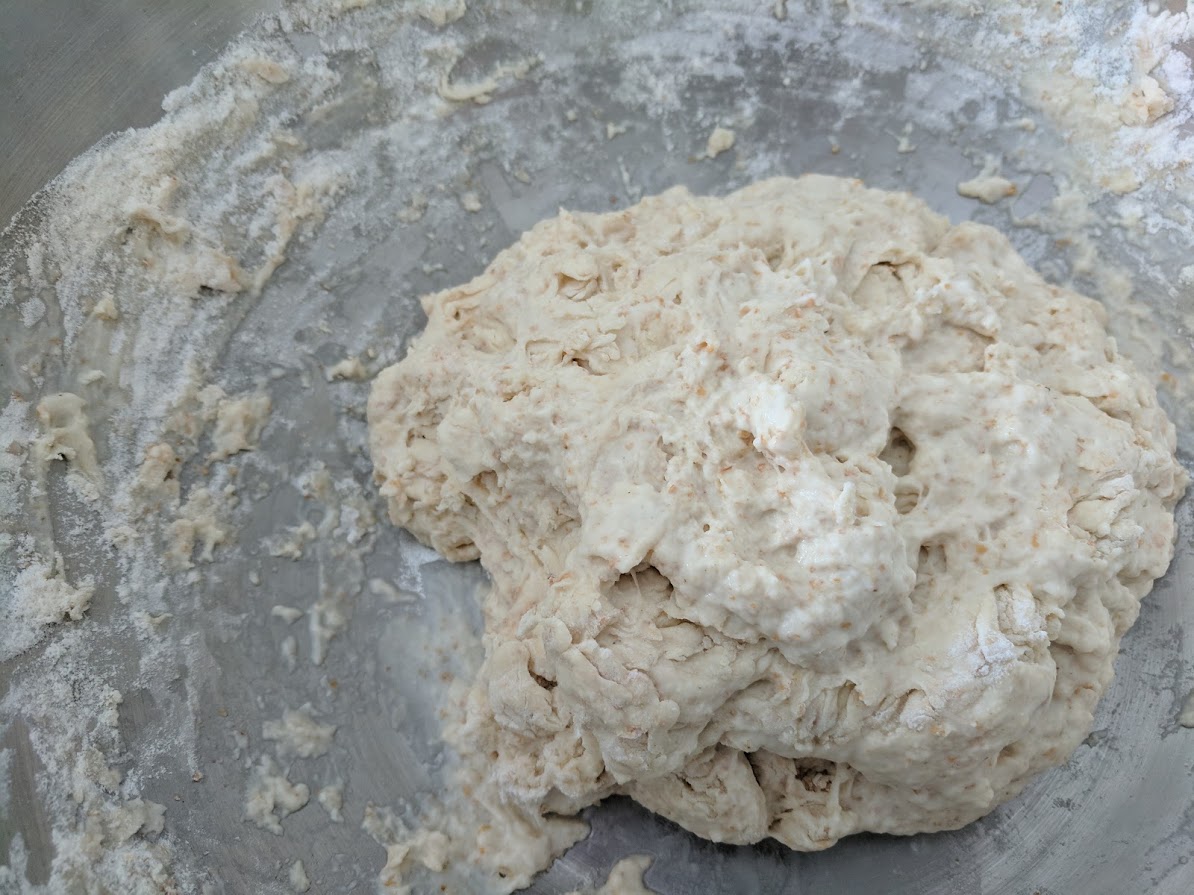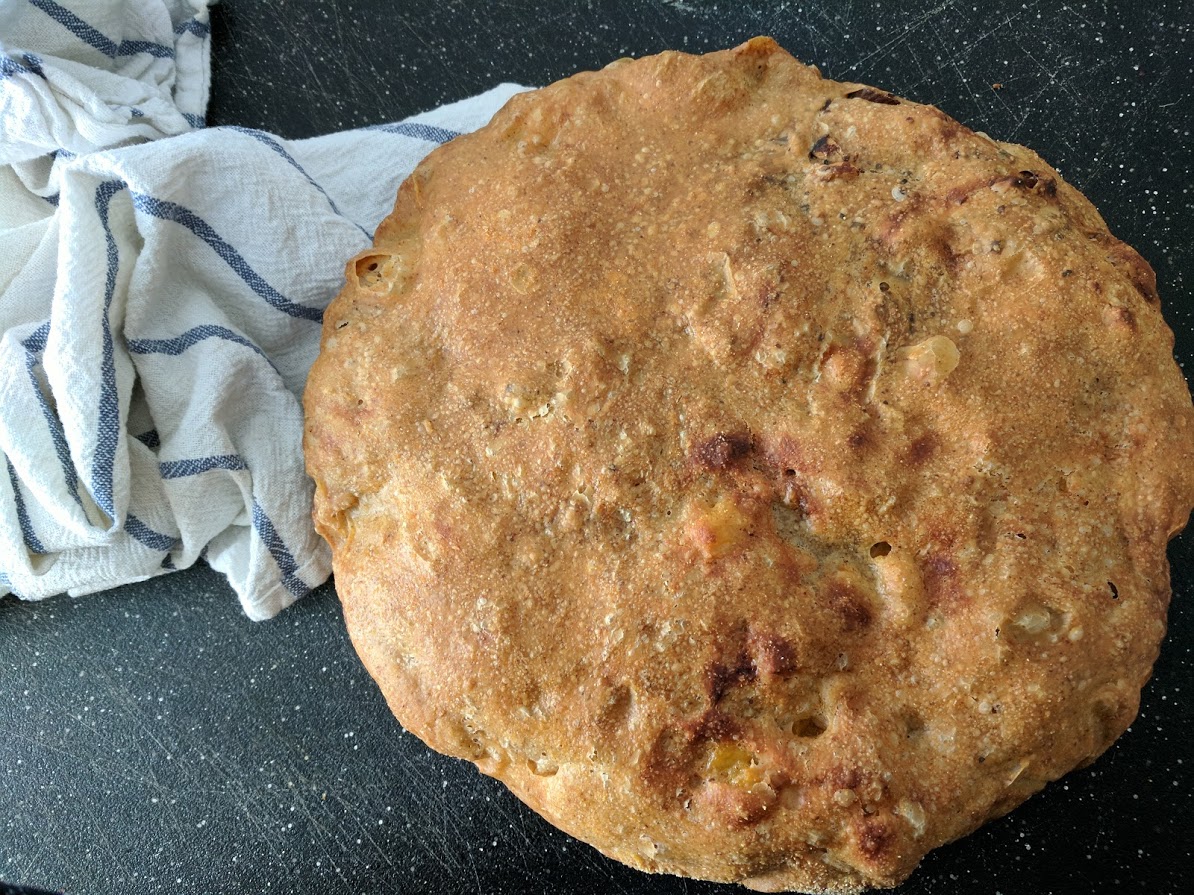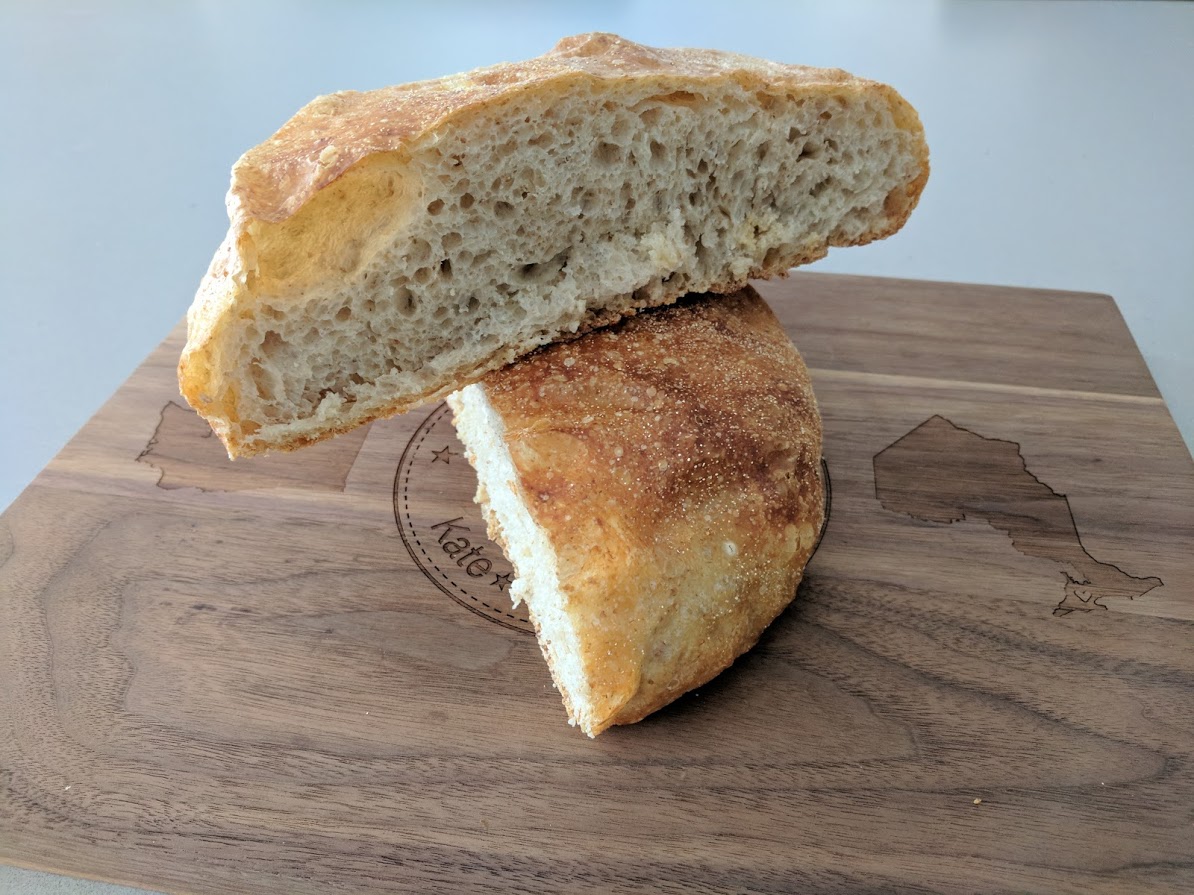Make This Bread!
It does not cost much. It is pleasant: one of those almost hypnotic businesses, like a dance from some ancient ceremony. It leaves you filled with peace, and the house filled with one of the world's sweetest smells. But it takes a lot of time. If you can find that, the rest is easy. And if you cannot rightly find it, make it, for probably there is no chiropractic treatment, no Yoga exercise, no hour of meditation in a music-throbbing chapel, that will leave you emptier of bad thoughts than this homely ceremony of making bread.”
-M.F.K. Fisher, from How To Cook a Wolf
Bread is magic food. It is ancient and universal, humble and accessible, transcending almost all boundaries of time and geography. I love that it is both emblematic of human ingenuity, of our ability to grow, and mill, and bake with grain, and also a wild process that is slightly outside of our ability to control the natural world. It is science and art and emotion and spirit all rolled into one.
We live in an age when people have very strong feelings about bread, not all of them positive. A growing availability of gluten-free products has made it entirely possible to live a life without wheat. This is wonderful news for those people choose not to eat it for a variety of totally legitimate reasons. I also acknowledge that a lot of of the bread we buy and eat today isn't very good for us, nor does it taste particularly good. Still. I love bread like I love no other food. I love it more than chocolate, more than coffee (gasp!). I once heard the food writer Julia Turshen say that her last meal would be simply a huge stack of "really great buttered toast." Mine, too.
I have tried, at various stages of my life, to establish a bread baking practice. In the communal kitchen of my university dorm, I taught myself to bake challah and cinnamon buns. People thought I was crazy (I probably was). In Seattle, I test drove recipes from all of the amazing west coast bakeries I discovered. The results were sometimes good, but never great; nothing felt like a home run. The process always produced heaps of mess and stress. It didn't live up to the romantic, ritualistic vision that I imagined. My efforts always peatered out after a couple of tries.
Last year, I decided to try again. I got Zoe super excited about the idea that we would raise our own sour dough started. It would be like a pet, I told her. She named it Toot. A week into the process, I started to dread opening the container. I couldn't handle the smell. I also worried a lot about making mistakes. The whole thing felt very complicated, with so much room for error. What if we wanted to go on vacation? What if I poisoned someone? I knew I was being dramatic, and that I could make it work if I really committed to it, but did I want to? Did I really want another living thing to feed and care for week after week. I decided, sadly, that I did not. I made my husband compost Toot one night while Zoe was sleeping.
I had begun to despair that my quest to integrate bread baking into our family life was hopeless, until one day recently I suddenly remembered that back when we lived in Seattle, my good friend Iulia had sung the praises of a no-kneed bread dough recipe she had started using. At the time I listened politely, but for whatever reason, I didn't even try to make it myself. I think I must have secretly thought that it seemed too good to be true, too easy. I was a total idiot. A few years of motherhood have cured me of the notion that everything worth while must be hard and time consuming. Parents simply don't have time for that kind of food snobbery.
So, I decided to try Jim Lahey's Basic No-Knead bread recipe, and the results blew my mind. Here was everything I had been looking for in the perfect loaf--a crisp but not-too-hard-to-bite crust, a moist, open crumb, and real depth of flavour. All this was achieved with just a bowl and a spoon, 4 ingredients, and a whole lot of time. Not my time, mind you. After the initial five minutes needed to throw the dough together, the covered bowl just hung out on my counter, slowly fermenting, for almost a whole day.
%50 whole wheat variation, just mixed.
I know, I know. This is not new. This recipe was published in 2006, and became something of an overnight sensation. But it is new to me, so I thought maybe it might also be new to some of you. I now make this bread at least twice a week. It may not fulfill my romantic vision of myself in my kitchen at dawn, kneading away. It may not involve me passing down to my daughters a sourdough starter that I captured out of thin air and nurtured for years. But who flippin' cares? My family and I are producing amazing, homemade bread together in our kitchen on the regular. It is a simple, consistent practice that I am proud to gift to my children.
I realize I am starting to ramble. The long and the short of it is: please, please, make this bread! It is easy! It is delicious! I promise, you will be so happy you did!
So far I have made the basic bread with all white flour, and I have made it with 50/50 mix of white and whole wheat flour. Although Lahey calls for bread flour, I have always used Robin Hood unbleached all purpose flour with no issues. I have also made several of the spin offs from his book My Bread: The Revolutionary No-Work, No-Kneed Method, including the almond apricot bread and the pizza dough.
I have made it using measuring cups and spoons and using a scale. I find it easier and more accurate to use the scale, but honestly, either way is fine. You want this dough to be quite wet, but to still form a ball. I find I usually have to add a bit more water than is specified, but not much. I have added too much water a couple of time, so that the dough is almost verging on a batter. The resulting loaf was somewhat flatter and wider, but still tasted really good, so try not to worry too much. Since it is currently winter, when dough rises more slowly, I bump up the yeast just a bit (to 1/2 tsp), and I sometimes let the first rise go a few extra hours. I bake this in my large Le Crueset dutch oven, but any large, heavy, lidded pot will do.
Basic No-Need Bread
adapted from Jim Lahey's My Bread: The Revolutionary No-Work, No-Kneed Method
Ingredients:
3 cups/400 grams bread or all purpose flour
1 1/4 tsp/ 8 grams fine sea or table salt
1/4 tsp/ 1 gram instant or dry active yeast
1 1/3 cups/ 300 grams cool water
cornmeal or extra flour for dusting
Method:
1. Stir together flour, salt, and yeast in a large bowl or lidded vessel (I like to use a big lidded casserole).
2. Add the water and stir with a spoon or your hand until the dough forms a wet ball. If there is loose flour in the bottom of the bowl, add a bit more water, one small splash at a time. The dough should be very moist and sticky, but not liquid.
3. Cover with a lid, a wet tea towel, or plastic wrap, and allow to rest in a warm spot for 12-18 hours (up to a full day if it is a very cold day), until the top is very bubbly and puffy. I like to aim for the full 18 hours, because the long fermentation is what gives the complexity of flavour and texture.
4. Get yourself a square of parchment paper, just big enough to line your pot. Put it on your cutting board or counter and sprinkle it with cornmeal or flour (I use cornmeal). Pull your dough out of the bowl and onto the paper. Take a minute to really admire those long strands of gluten. Tuck the sides of the dough underneath to form a ball, and sort of roll it around int the cornmeal so that it is lightly coated. The dough will be very loose and wet, so don't worry too much about achieving a perfect shape.
4. Pick up the piece of parchment with the bread and place it your pot. Put on the lid and allow to rise for another 2 hours. After 1 1/2 hours, preheat your oven to 475 degrees F. After the full 2 hour rise time, bake in the bottom 1/3 of your oven for 30 minutes, then remove the lid and continue to bake until the top is as brown as you like it, 15-30 minutes.
5. Remove to a cooling rack and tap the bottom. The bread should sound hollow inside. If it doesn't, put it back in for a little while. Cool on the rack for about an hour.
I find this bread keeps very well, lightly wrapped in its parchment, then put into a ziplock, for about three days.










